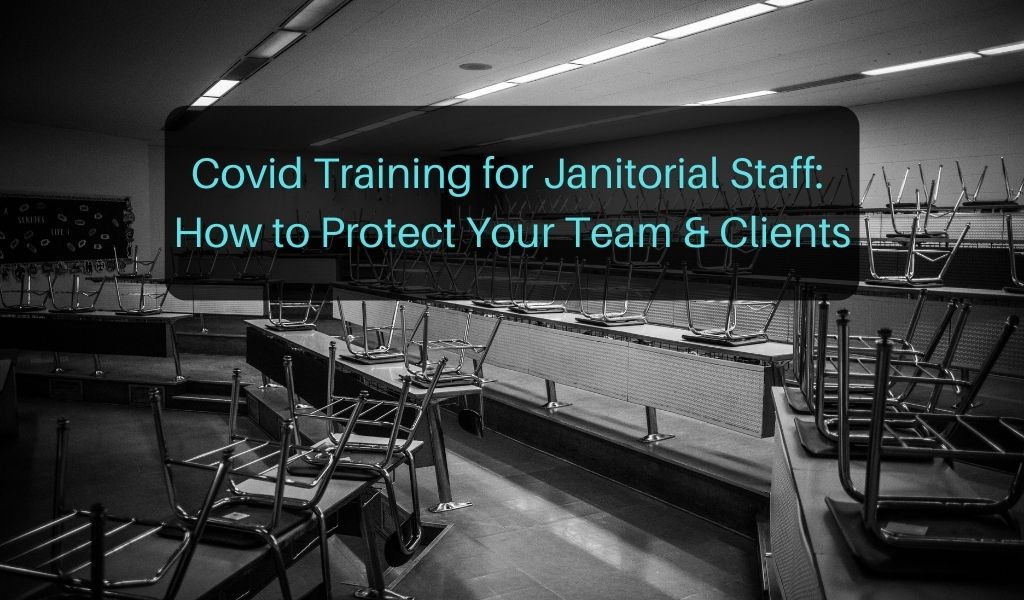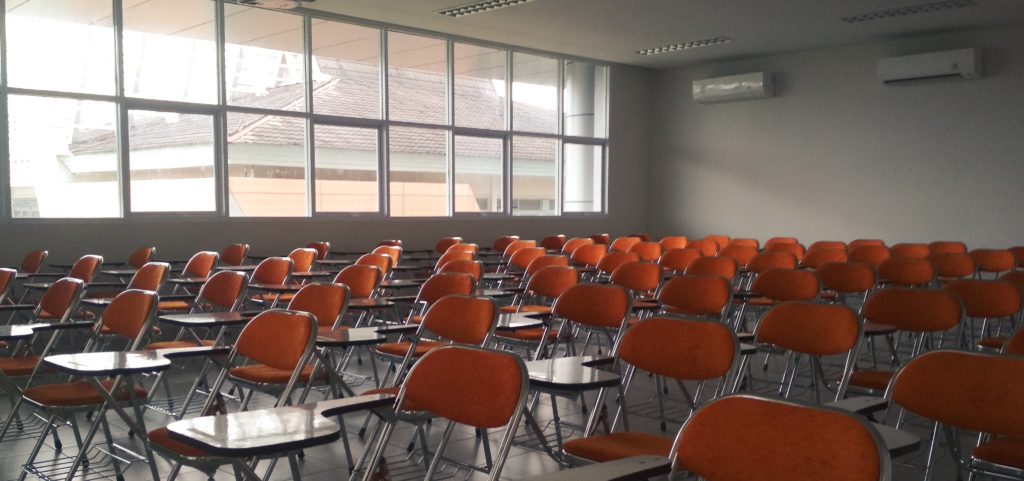Ongoing training for janitorial staff is vital for maintaining quality and the facilities you clean safe and healthy.
In many commercial cleaning operations, the training for janitorial staff is a one-time thing. You hire a new employee, spend a day training them, and that’s it. That’s entirely understandable. Training takes time, which, when you have a full schedule, is not something you have in abundance.
There’s also the fact that janitorial work is hard work, but it’s not usually very complicated. Indeed, there’s a difference between working in a retail shop vs. a medical office, and there are areas of specialization that do require extensive knowledge. Carpet cleaning and biohazard remediation are just two of those specialties.
However, if we’ve learned anything since the beginning of this decade, it’s that the cleaning industry is a critically important part of our world and that organizations within the industry need to keep an eye on science and medicine. It might seem like another time, but it wasn’t all that long ago that gloves were about all the PPE a janitor would use, and electrostatic sprayers were practically unheard of. For that matter, it was probably uncommon for customers to ask you much about viruses or contamination.
The world changes and your training for janitorial staff have to change, too. Your team needs it, your customers expect it, and as a bonus, it’s good for everyone.
Manage cleaning checklists and keep your staff up to date with COVID guidelines using Janitorial Manager. Sign up for a free demo to learn more!
Why it’s time to update your training for janitorial staff
It’s easy to think that COVID training for janitorial staff is a done deal. We have vaccines now, and you’ve already altered so many things about how your team cleans. There are COVID cleaning checklists for restaurants, schools, offices, for medical facilities. The Centers for Disease Control and Prevention (CDC) and the World Health Organization (WHO) have issued guidance and cleaning protocols. The Environmental Protection Agency (EPA) has a list of disinfectants that kill COVID-like viruses.
Cleaning professionals worldwide have updated their training for janitorial staff to account for the ways this virus spreads. The cleaning staff is wearing more PPE than ever, and we’ve all probably lost track of how many times we wash our hands each day.
The thing is, COVID isn’t the first pandemic we’ve seen, though it’s substantially more fatal than many others. In 2009, the H1N1 virus, also known as the Swine Flu, spread around the globe, while we saw the H3N2 virus in 1968, and a pandemic caused by the H2N2 virus in 1957. We’ve also seen other serious contagious diseases like SARS, MERS, and the seasonal flu.
The point is, there are plenty of reasons to introduce specialized training for janitorial staff to face these issues and any others that may come up in the future.
But not only is additional training good in order to keep up with the contaminants and viruses circulating in the world, but it’s also good for your budget. How? According to the Bureau of Labor Statistics, the average full-time employee “building and grounds cleaning and maintenance occupations” misses a little under two days of work each month because of illness or injury.
That means you’re paying someone else to work overtime. It means your customers aren’t getting the service they’re accustomed to. And it means you have to hustle to fill the void. If they’re out for more than a few days, or in quarantine, you may even need to hire someone temporarily, and that can get expensive quickly. So it’s in the best interest of your budget to keep your training for janitorial staff updated.
How to update your janitorial training to keep your team and your customers healthy
The first thing to do when you update your training is to look at the guidance and regulations from your state or national government. The Occupational Safety and Health Administration (OSHA) also has recommendations regarding air ventilation, PPE, and safe work practices. Among them:
- Avoid dry sweeping
- Discontinue high-pressure cleaning (depending on the environment)
- Restrict access to contaminated areas
Additional recommendations from the CDC include:
- Use a vacuum with a high-efficiency particulate air filter (HEPA)
- Do not vacuum a room with other people in it
- Turn off in-room heating or air conditioning when you vacuum to avoid contaminating HVAC units
And don’t forget to reemphasize some of the other training points that may have slipped over time:
- Use products as directed
- Be sure to follow the recommendations on contact time. It’s hard to remember that you can’t just spray and wipe. Some disinfectants with quaternary ammonium or phenolic as the active ingredient, for example, require up to 10 minutes of contact time. Others only require one minute or less to be effective.
- Wash hands regularly with soap and warm water for at least 20 seconds
- Don’t touch your face
- Maintain a distance of six feet or more whenever possible
- Always wear a facemask that covers your mouth and nose
- Cover any cuts or scratches with a bandage prior to working
- If at all possible, wait 24 hours before cleaning a facility with a known case of COVID-19
- Revisit OSHA’s Hazard Communication Standard, so your team knows how to safely handle chemicals
Remember, even though you’ve heard most of these points over and over, it’s because they work. Most, if not all of these, should already be part of your training for janitorial staff members. Importantly, however, is the fact that it’s so easy to let things slide over time. We get tired or rushed or complacent and don’t remember to put that PPE on correctly. Or we wipe off disinfectants before they’ve had the required contact time.
It’s worth revisiting these protocols to ensure the safety of your team and your customers. And even once we’ve moved beyond COVID, there are almost always good reasons to maintain most of these procedures in the future.
Keep your COVID-19 safety practices up to date and readily available with Janitorial Manager’s cleaning management software. Sign up for a free demo to learn more about how we can help keep your staff safe.


